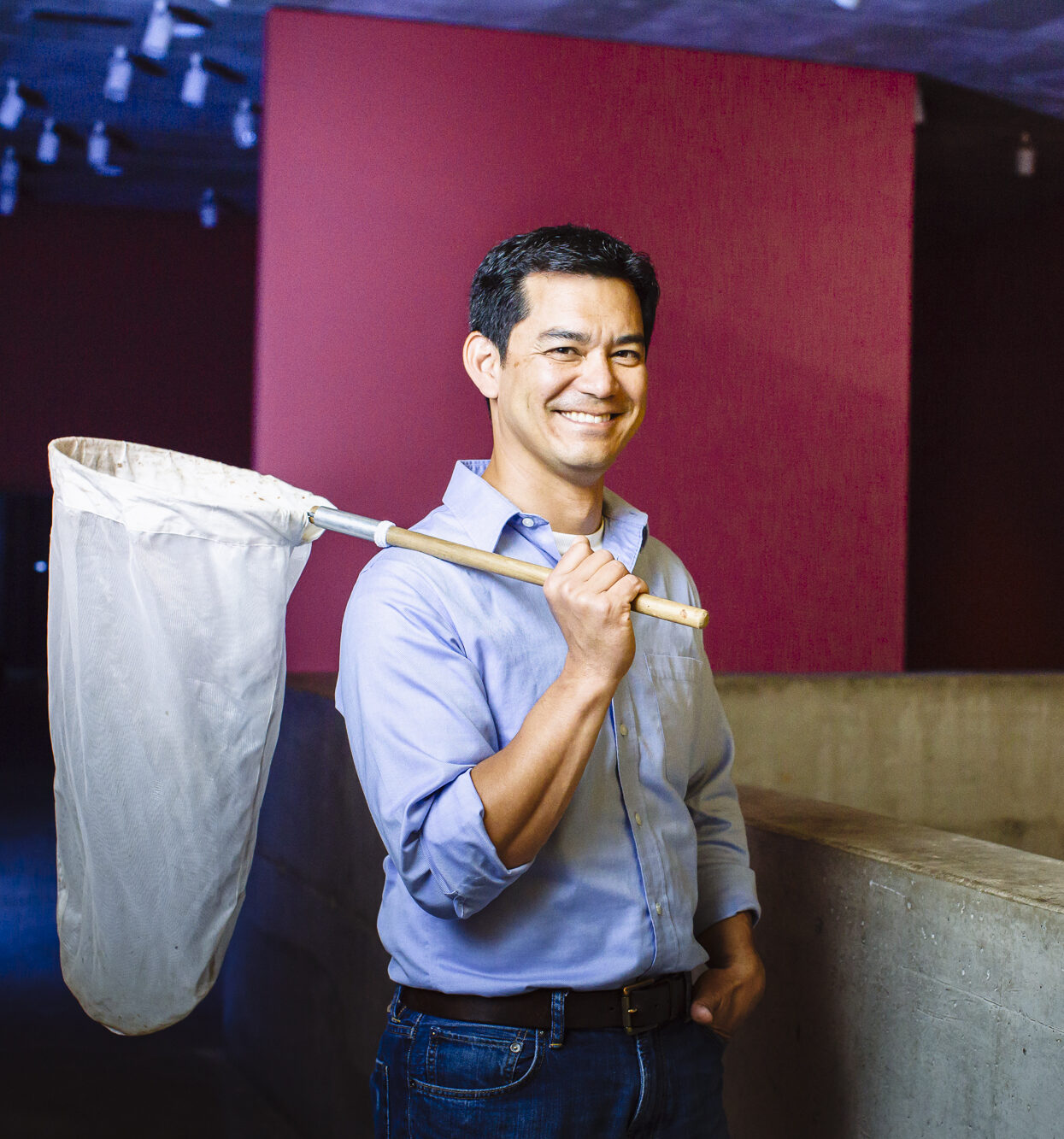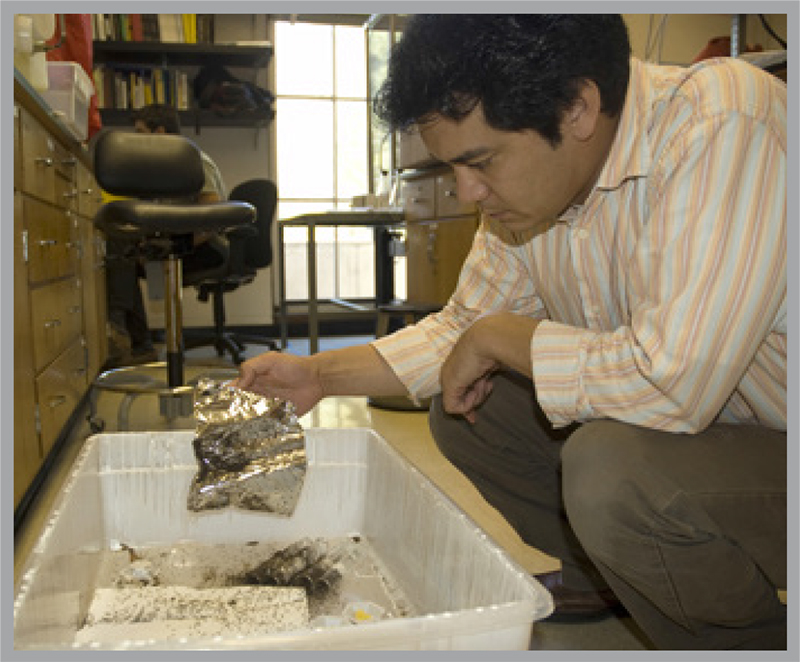
Neil Tsutsui
Environmental Science, Policy and ManagementNeil Tsutsui is a Professor in the Department of Environmental Science, Policy and Management. His research focuses on on ants and bees – how they communicate, why they behave in the ways they do, their ecology, and their evolution. He works in both the field and the lab, using a variety of different approaches. Professor Tsutsui received his B.S. in Biology, specializing in Marine Science from Boston University and his Ph.D. in Ecology and Evolutionary Biology from UC San Diego.
Spark Award Project
Manipulating Insect Pheromones to Control a Widespread and Damaging Insect
Insects cause tremendous damage to agricultural products and are costly to control in businesses and residential settings. Moreover, the use of conventional insecticides degrades water and soil, presents health concerns, and is ecologically damaging. In California, the invasive Argentine ant is the leading pest of households and businesses and causes substantial agricultural losses in vineyards and citrus orchards. Tsutsui is silencing genes for pheromone production as a targeted, environmentally friendly approach to controlling Argentine ants. This project builds on his lab’s extensive prior research on Argentine ant genetics, genomics, behavior, and chemical ecology. The Bakar Fellows Program is supporting field tests of these control techniques to accelerate their transition from the lab to the marketplace.
Neil Tsutsui’s Story
Creating a New Trail to Solve an Old Problem
By: Wallace Ravven
April 15, 2013
Familiarity breeds acceptance among creatures large and small. In fact, it’s the foundation for cooperation in nests of ants, troops of baboons or suburban neighborhoods.
The reverse is also true. Unfamiliarity can breed aggression. Among the world’s most social creature – ants – encounters between workers of the same species, but from different colonies, can lead to torn-off limbs or fights to the death.

The exception are Argentine ants in California, the common household pests that often stream inside when the weather changes, or when they get a whiff of a food source. Argentine ants from different regions in California recognize each other as kin, and don’t attack each other.
Aggressive tendencies have probably become muted among the California ants because they are all descendants of the same group that was originally introduced from South America. They are family, says Neil Tsutsui, an expert in ant genetics and behavior and an associate professor of environmental science, policy and management.
“When we look at the DNA fingerprints of ants from different parts of the state, they are genetically nearly identical,” he says. “You can take an Argentine ant from San Diego and mix it with those in the Bay Area, and they cooperate as if they are the same colony. They will clean each other, and take care of each other’s babies.”
Because Argentine ants have done away with fighting, they can devote all their time and energy to feeding and reproduction. Throughout California, they make up one effective “super-colony,” numbering in the trillions – by far the state’s most common insect, Tsutsui says. And a potential troublemaker.
In some areas, the ants disrupt ecological interactions, repel pollinators and compromise business operations. They also cause significant crop loss, particularly to citrus and grapes, and are considered a significant agricultural pest.
In 2012, Tsutsui received a prestigious Bakar Fellowship which supports innovative research by early career UC Berkeley faculty, with a special focus on projects that hold commercial promise. The program provides support for his lab to develop and test new ways to reduce damage caused by the ants.

secreted by the plant parasites.
Photo: Alex Wild
Funded by his Bakar Fellowship Tsutsui is now on the trail – literally – of new strategies to repel the invaders. He is experimenting with ways to exploit the ants’ reliance on chemical signaling.
Ants normally distinguish friend from foe by detecting colony-specific molecules called pheromones that coat their bodies. Tsutsui has identified the recognition pheromones and other chemical signals, and has shown in experiments that the ants’ behavior can be tweaked by exposing them to identical, environmentally harmless synthetic pheromones.
He has considered ways of introducing pheromones that spell “invader” to colonies of Argentine ants, in order to boost their aggression. Slight alterations in one of the pheromones can create a false signal to the ants that colony mates are intruders. This can decrease the population either directly through warfare, or indirectly because increased aggression reduces the time and energy the ants use for feeding and reproduction.
His Bakar Fellowship currently supports research to test the pest-control effectiveness of a synthetic version of a natural trail pheromone that Tsutsui discovered. Ants lay down the pheromone as they travel between their nest and potential food for the colony, and it serves as a trail guide.
His lab has drawn trails with a pure version of the pheromone, and shown that the ants will follow these artificial trails too. He aims to introduce synthetic trail pheromones identical to the real ones to draw ants in a chosen direction, perhaps away from a food source – and presumably from crops, businesses, or even into poison traps.
“The Bakar Fellowship is helping us move from discoveries to applications,” he says. We are at the beginning stage, but we hope to start small-scale field experiments this year.”

He has contacted managers at the Charles Krug Winery in the Napa Valley, where Argentine ants live in symbioses with agricultural pests, such as aphids, mealybugs, and scale insects. Winery managers are interested in hosting a field experiment to see if the synthetic trail pheromone strategy can successfully divert the agricultural pests or reduce their impact.
Tsutsui made the connection with Krug Winery through the help of Jeff Burton, the director of UC Berkeley’s Skydeck, a start-up accelerator that serves as a center for training and experience in technology entrepreneurship. Skydeck staff are working with Tsutsui to explore the promise of starting a company to commercialize his pheromone pest-control approach.
First though, the Bakar Fellowship will support proof-of-concept experiments to test the effectiveness of lab – proven techniques in the field. “This is the real problem that the Bakar program addresses,” Tsutsui says. “You see the potential of all these Berkeley discoveries, but there is this gap on moving them that crucial step to having real-world value. This is a great opportunity for us to do just that.”
Over the past two years, Tsutsui’s lab has been working on a strategy to detect bedbugs from the pheromones they emit. In principle, a hand-held detector could identify the presence of even a single bedbug. Tsutsui is working with Skydeck to explore the commercial potential of the technique.